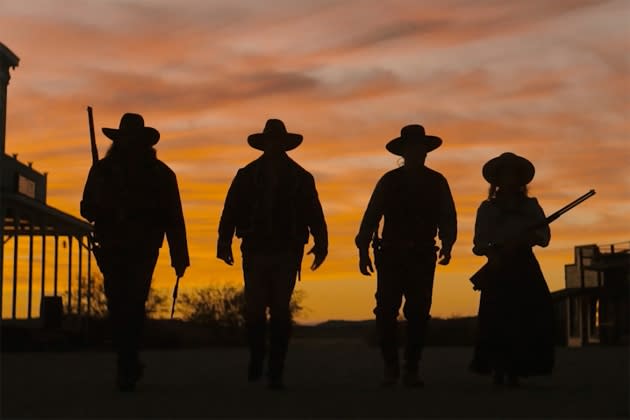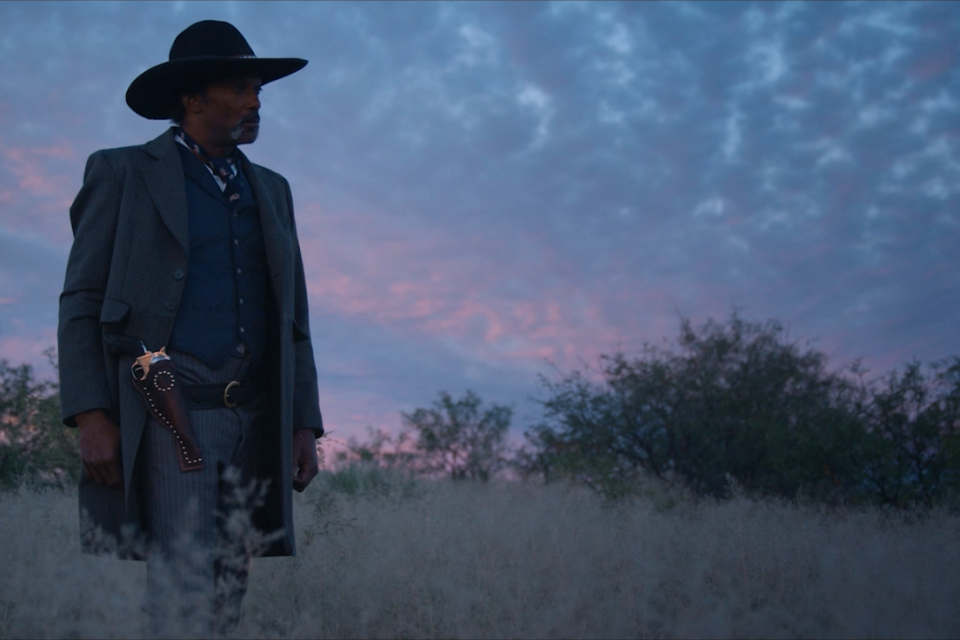‘The Real Wild West’: The Dark, Bloody History of How the West Was Won

“When the legend becomes fact, print the legend.” The adage comes from The Man Who Shot Liberty Valance, made by John Ford, the undisputed master of a genre that plays with the disparity between American myth and reality like no other. The new four-part Curiosity Stream docuseries The Real Wild West tries its own hand at this task, dutifully highlighting stories and figures that have traditionally received short shrift from Hollywood and other purveyors of pop culture. Black cowboys, fearless madams, conquistadors, the Trail of Tears, the depletion of the buffalo, Alta California. This is an earnest accounting of the West that didn’t make it into most John Wayne movies. It is largely a series of slaughters and land-grabs that reminds us the West was won often through ugly, bloody measures taken against those who were already there.
It’s a handsome production, with cinematography that situates its subjects in wide-open spaces and captures the sweat and excitement of, for instance, a Black rodeo, one of many events included to demonstrate that, while the frontier has long been closed, the West is still very much alive. It incorporates highly qualified experts, from university professors to a very enthusiastic, wide-eyed gold prospector still infused with the spirt of ’49. It delves into areas that we might not immediately associate with the West – for instance, the region’s significance in the Civil War, when Confederate troops marched into New Mexico as part of the mission to preserve and expand slavery. It shows a knack for breaking the well-worn down to colloquial essentials. The Lewis and Clark Expedition, undertaken in the aftermath of the Louisiana Purchase, is characterized as an answer to a very basic question: What did Thomas Jefferson just pay for? This is solid popular history, engaging and wide-ranging, worth a look for anyone interested in the time and place.
More from Rolling Stone
The Affirmative Action Decision Doesn't Have a Damn Thing to Do With Meritocracy
'America Is Queer' and Drag Icon Taylor Mac Is Preaching the Gospel

But The Real Wild West also misses an opportunity worthy of the Gold Rush. In laying down the facts, it often loses sight of those myths, or the legend. Yes, it explains the phenomenon of Buffalo Bill Cody, who pioneered the mythology contained in the wild west show, which celebrated the adventurousness and ingenuity of white settlers at the expense of just about anyone else (although he did employ the Hunkpapa Lakota leader Sitting Bull for a time). It scatters clips of The Lone Ranger, Gene Autry and other B-movie staples. But the Western itself doesn’t feature prominently until the end of the final episode. By then, The Real Wild West has squandered many chances to rope in viewers who might only know the legend.
Examples: The series goes into some detail on the wild-and-woolly mining town of Deadwood, South Dakota, and historical figures such as Wild Bill Hickok and Calamity Jane. There was a TV series about this. It was called Deadwood. It was good, and it was in the business of busting clean, presentable Western myths. The Real Wild West also looks at the central role played by the world’s oldest profession in the West – the female brothel bosses, the layers of business transaction. There was a movie about this. It was called McCabe and Mrs. Miller. It, too, was outstanding. Perhaps the series producers couldn’t afford footage of the above or other, equally pertinent entertainment, revisionist or no. But at least acknowledge their existence and importance. In comparing how the realities of the West stacked up against the fictions, The Real Wild West struggles to organically integrate the two.
Which hardly makes it a waste. There’s plenty to recommend here, starting with the presence of narrator, commentator and too-occasional musical accompanist Dom Flemons, an old-time music encyclopedia and founding member of another genre-breaking entity, the sublime Carolina Chocolate Drops. When Flemons gets to pause his narration and ply his craft here, strumming his guitar and singing original compositions, the results are quite haunting, worthy of Leonard Cohen’s music for McCabe. His inclusion was an inspired choice.
One of the series’ experts, Western historian and author Megan Kate Nelson, provides a firm, concise onscreen manifesto for The Real Wild West: “Any time we learn about the past, we should want to learn about its dirtiness and its grittiness and its complexities.” The series, for the most part, lives up to this standard. There was very little simple about the wild West, no matter how hard we try to shrink it to avoid inconvenient truths.
Best of Rolling Stone

